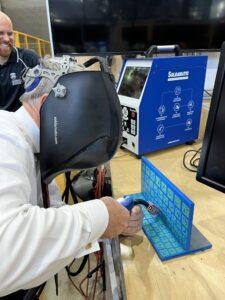Lessons in collaboration from across the Tasman
| From April issue NZ Manufacturer magazine www.nzmanufacturer.co.nz
Andrew Bayly, Minister for Manufacturing In my February article, I announced the first meeting of my Manufacturing Productivity Advisory Group, a forum for business leaders keen to enable a brighter future for New Zealand’s manufacturing sector. I am pleased to say this group has already met again. Chaired very capably by Sarah Ramsay, chief executive of United Machinists and chair of the Advanced Manufacturing Aotearoa council, there are key themes emerging, which most people in the industry will already be well aware of. That education is needed to change the perception of the industry in people’s minds, especially those of parents with children who are contemplating their future careers and who think ‘manufacturing’ is still a dirty world. That our research centres focus on novel innovation without considering the manufacturing capabilities needed to produce them. That procurement for infrastructure is skewed towards lowest-cost international providers, thereby discouraging domestic suppliers from ramping up their manufacturing capability. And, of course, that investment is required in automation and Industry 4.0 technologies which will help drive productivity improvements. We are now in the process of finalising the finer elements of these initiatives that will help inform future policy announcements, which you will hear about in due course. In late March, I spent a week in Australia, during which I met with four ministers in the Australian Federal Government, including Senator Hon Tim Ayres, the Assistant Minister for Manufacturing and Assistant Minister for Trade.
This was the second time I had met with Tim and I was keen to ask him how the Australian manufacturing sector organises and funds itself and its activities. We also discussed how the Australian Government has managed to secure successful partnerships with the country’s manufacturing businesses, what KPIs they use to measure success, what tools are available to the Government to support manufacturing (including procurement) and which ones have helped the most, and where the Government should get involved in the sector (and, equally, where it should not). Importantly, we discussed what opportunities exist for our two countries to work together to grow manufacturing productivity on both sides of the Tasman. It impressed me that the Australian Government has managed to get cross-party support for their House of Representatives inquiry, ‘Sovereign, Smart, Sustainable – Driving Advanced Manufacturing in Australia’. The inquiry recommends a National Advanced Manufacturing Commissioner be appointed to facilitate policy coordination and serve as a single high-profile ‘shopfront’ for SME manufacturers. I later met with Maria Vamvakinou MP and Scott Buchholz MP, who co-chair the Parliamentary Friends of Manufacturing group in the Australian Parliament. This provides a non-partisan forum for parliamentarians to meet and interact with businesses, unions, industry and advocacy groups to help support and strengthen Australia’s manufacturing industry. In the middle of the week, I joined up with a delegation of manufacturing business leaders from New Zealand organised by the Heavy Engineering Research Association (HERA), led by their chief executive Dr Troy Coyle. Joining key HERA personnel were managing directors David Moore of Grayson Engineering, Wayne Carson of D&H Steel Construction, Dave Anderson of John Jones Steel, Gareth Evans of Farra Engineering, and Matthew Cross of the TE Group, along with HERA board chair Craig Stevenson of Aurecon. The delegates were keen to get a better understanding of emerging advancements in research in Australia, particularly how they relate to advanced manufacturing, and how these could be transferred to industry here in NZ. We were treated to a tour of the Australian Composites Manufacturing Cooperation Research Centre (ACM-CRC) located at the University of NSW in Sydney. Their research into transitioning composite manufacturers into Industry 4.0 through workforce development and digital production is truly inspiring. As David Moore pointed out, while NZ manufacturers already collaborate with NZ and Australian universities and research centres, there are substantial opportunities to do so much more. “In New Zealand, this currently tends to be done on a small scale – say a PhD student looking for a project – but we need people to come in, evaluate our businesses and suggest ways where we can make improvements, how we can get rid of bottlenecks and lift productivity,” he said. “The likes of the ACM-CRC team are craving real-life experience to utilise their research in the workplace.” Later that day we toured the University of Wollongong Facility for Intelligent Fabrication. This is a national facility focused on industry adoption of welding automation, using digital twinning and AI concepts to prototype new welding processes using robotic automation.
The application of these processes to the typical short-run manufacturing processes we use in NZ would be very exciting. They also demonstrated their Soldamatic technology which enables students to use and be trained in virtual reality welding units. Dr Troy Coyle of HERA said “The visits were informative in terms of the importance of long-term Government support for advanced manufacturing and industry-led research training programmes. A consistent theme through the visits was the importance of solving real problems for industry using advanced technologies, such as AI and digital twinning, through a focus on research impact.” I think it’s important that as the Minister, I help where possible to facilitate access to the latest technologies being deployed internationally, and we also look to explore international market opportunities, as well as ensuring domestic manufacturing is well supported.
|

 At the University of Wollongong Facility for Intelligent Fabrication.
At the University of Wollongong Facility for Intelligent Fabrication. The Minister using the Soldamatic technology (scoring 95/100!)
The Minister using the Soldamatic technology (scoring 95/100!)

